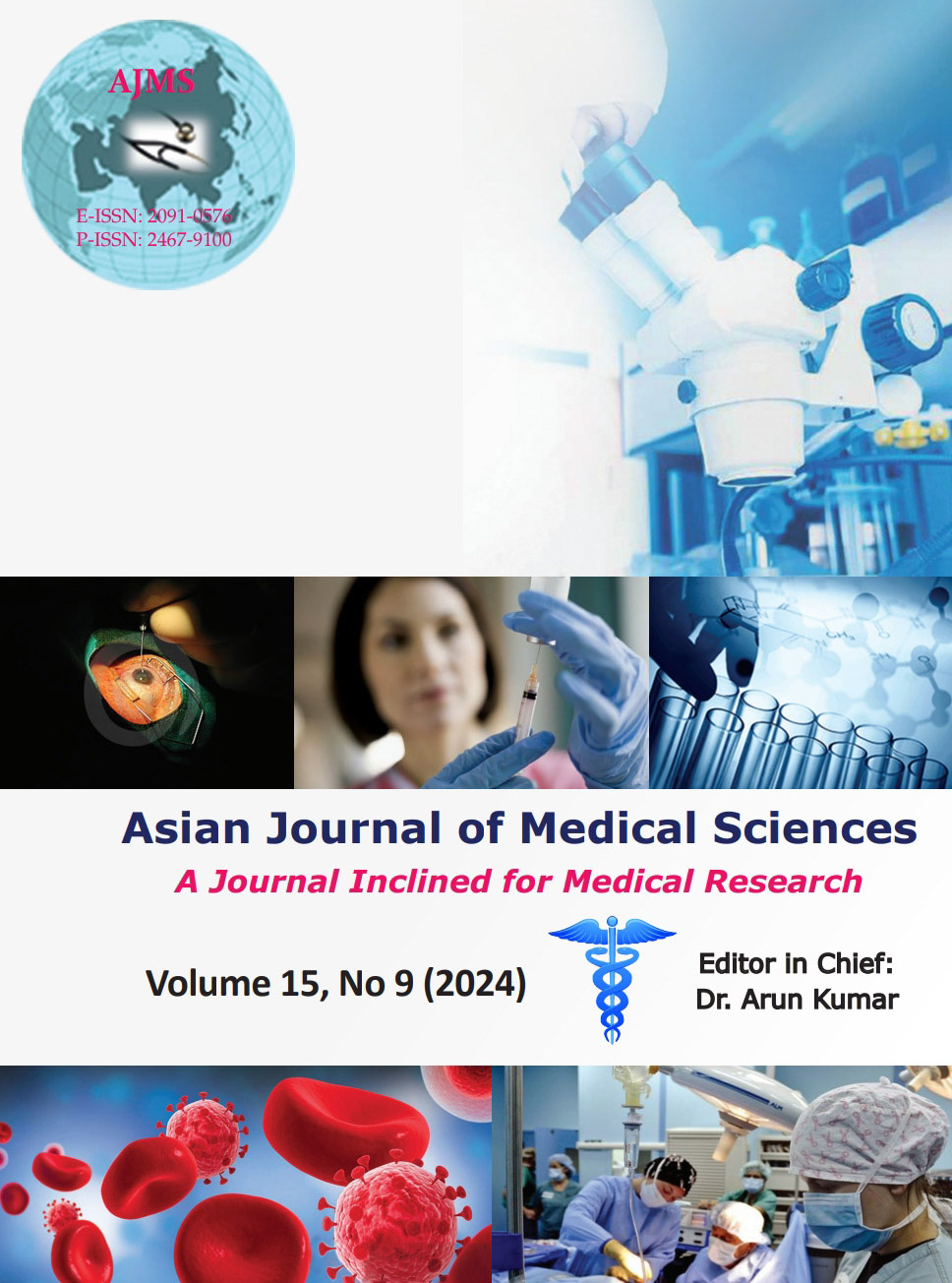Characterization of biofilm-forming ability and antibiotic resistance profiles of clinical Pseudomonas aeruginosa isolates from patients with cystic fibrosis
Keywords:
Pseudomonas aeruginosa; Cystic fibrosis; Biofilm; Antibiotic resistance; Clinical isolates; Multi-drug resistanceAbstract
Background: Pseudomonas aeruginosa is a key pathogen in cystic fibrosis (CF) associated infections, known for its biofilm-forming ability and resistance to multiple antibiotics. Understanding the relationship between biofilm production and antibiotic resistance profiles in clinical isolates can guide treatment strategies.
Aims and Objectives: The aims of this study were to investigate the biofilm-forming abilities and antibiotic resistance profiles of clinical P. aeruginosa isolates from patients with CF and to determine the relationship between these two factors and their impact on treatment efficacy.
Materials and Methods: A cross-sectional study was conducted on 100 clinical isolates of P. aeruginosa from CF patients. Biofilm-forming capacity was categorized as strong, moderate, or weak based on quantitative assays. Antibiotic resistance was assessed for ciprofloxacin, tobramycin, ceftazidime, meropenem, and piperacillin/tazobactam. Multi-drug resistance was defined as resistance to three or more antibiotic classes. Statistical correlations between biofilm-forming capacity and resistance levels were evaluated using the Chi-square tests.
Results: Fifty-six percentages of isolates were strong biofilm producers, while 34% and 10% were moderate and weak producers, respectively. The highest antibiotic resistance was observed against ciprofloxacin (60%), followed by tobramycin (50%) and ceftazidime (45%). Forty percentages of the isolates were classified as multi-drug resistant. Strong biofilm producers demonstrated a significantly high correlation with antibiotic resistance (P<0.05). Two predominant clonal groups were identified among the isolates, suggesting a possible clonal spread of resistance traits.
Conclusion: The study confirms a strong association between robust biofilm production and heightened antibiotic resistance in P. aeruginosa isolates from CF patients. These findings highlight the need for targeted therapeutic strategies to disrupt biofilm formation and curb resistance spread.
Downloads
Downloads
Published
How to Cite
Issue
Section
License
Copyright (c) 2024 Asian Journal of Medical Sciences

This work is licensed under a Creative Commons Attribution-NonCommercial 4.0 International License.
Authors who publish with this journal agree to the following terms:
- The journal holds copyright and publishes the work under a Creative Commons CC-BY-NC license that permits use, distribution and reprduction in any medium, provided the original work is properly cited and is not used for commercial purposes. The journal should be recognised as the original publisher of this work.
- Authors are able to enter into separate, additional contractual arrangements for the non-exclusive distribution of the journal's published version of the work (e.g., post it to an institutional repository or publish it in a book), with an acknowledgement of its initial publication in this journal.
- Authors are permitted and encouraged to post their work online (e.g., in institutional repositories or on their website) prior to and during the submission process, as it can lead to productive exchanges, as well as earlier and greater citation of published work (See The Effect of Open Access).




